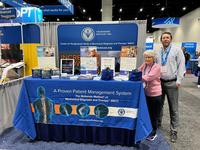News Room
Reviving Referrals with Direct Access
Good physical therapy practice owners must also be good marketers as the health care model continues to evolve.
When physician referral patterns changed a few years ago, David Grigsby started looking for a way to reverse the trend. He spotted an opportunity in direct access, something few patients and even some practice owners knew much about just a few years ago.
Direct access essentially allows a patient to get physical therapy without a referral from a primary care physician and still have it covered by health insurance. Though they differ, all 50 states currently have some kind of direct access law.
"What started happening in 2012 was the large hospitals began buying up private physician practices," says Grigsby, MPT, Cert. MDT. "Hospitals want all those primary care patients and payments to stay in house."
Despite the fact that about 80 percent of adults will experience back pain in their lifetime, only about 7 percent who see their doctor for back pain are referred to physical therapists by a physician, according to a recent study.
"Our goal was to reach out to not only the 7 percent, but the other 93 percent that are out there," Grigsby says. "Direct access really saved our practice."
Midsouth Orthopaedic Rehab began focusing on direct access patients, an underutilized audience in Tennessee.
Grigsby set out to raise awareness of direct access, speaking at churches, businesses, local organizations ...
"Anyone I could get in front of and tell them why MDT is a solution," Grigsby says. "What I learned early on is that people have a hard time understanding what PT does for them, let alone what MDT can do for them."
Grigsby is a certified practitioner of the McKenzie Method® of Mechanical Diagnosis and Therapy® (MDT).
The evidence-based MDT system begins with a thorough mechanical evaluation to establish a "cause-and-effect" relationship between historical pain behavior as well as the response to repeated test movements, positions and activities.
A systematic progression of applied mechanical forces utilizes pain response to monitor changes in motion and function to classify the disorder. Clinicians then develop a specific plan of care based on the examination results that empowers patients to treat themselves when possible.
The self-treatment aspect makes McKenzie an efficient method of physical therapy as well, often taking six or fewer visits at MidSouth Orthopaedic Rehab as opposed to the national average of 11 or more.
"Self-management and patient education are key to what we do," he says. "The key thing for me is having one-on-one interaction with that patient and seeing an immediate effect."
Grigsby is able to spread the word about MDT using a mix of traditional and tech-based marketing.
"With health care changing, we have to start marketing ourselves in different ways," Grigsby says.
"We still speak a great deal and still do a great deal of networking," he says, social networking included. "We're starting to see more direct access referrals from social media."
About 80 percent of Midsouth's current patients use direct access and many referrals come via word-of-mouth, showing how diversified marketing and direct access can have a direct impact on a practice.
Share your news! Send your story to us and we'll post it for everyone to read.




